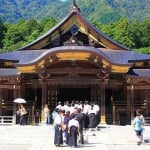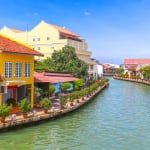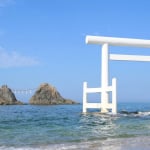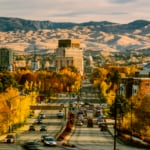Name: Wooden Churches of the Carpathian Region in Poland and Ukraine
Address: Carpathians, Ukrayina
Official/Related Site: http://whc.unesco.org/en/list/1424
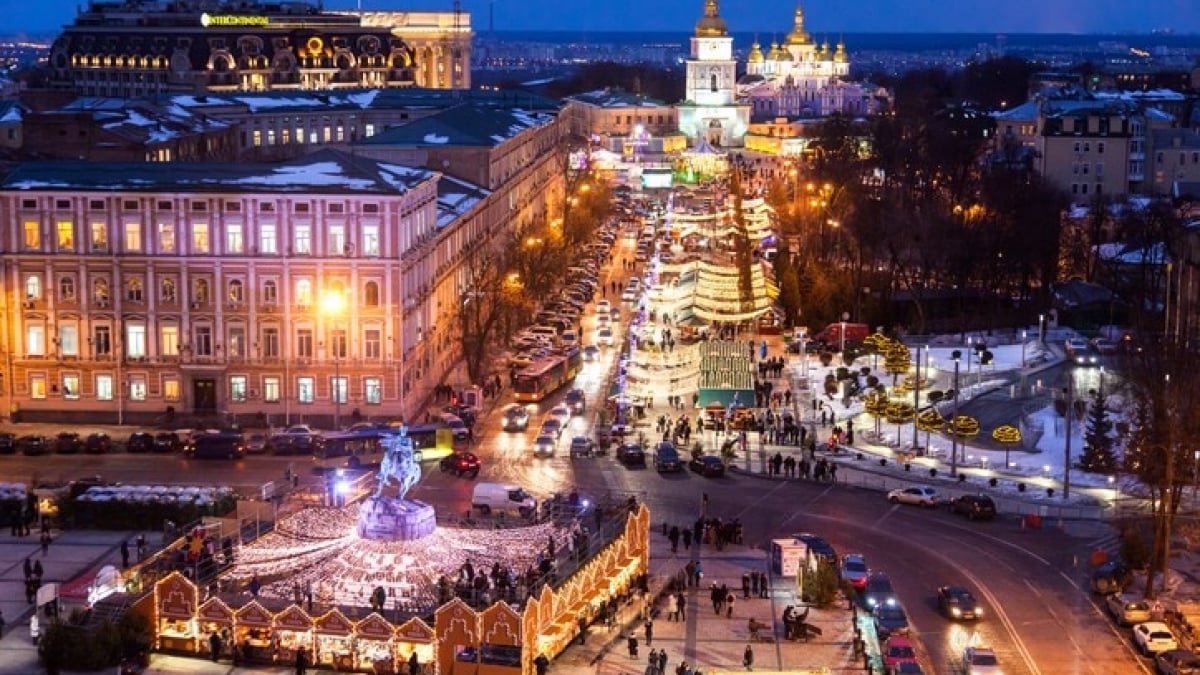
Rising in Popularity! 18 Must-See Tourist Attractions in Ukraine
Ukraine is a country located in Eastern Europe, surrounded by Russia, Hungary, and Poland, with the Black Sea to the south. Its simple blue and yellow flag is said to represent the blue sky and the land rich with golden crops.
Did you know that Ukraine is often called the "Pearl of Europe" due to its breathtaking beauty? The romantic scenery of autumn leaves, old churches, and cobblestone streets is said to be mesmerizing. Each city has its unique charm, from Lviv, lined with historic buildings, to Kyiv, known as the "Mother City," and Odesa, which combines the elements of a seaside resort and a thriving trade port along the Black Sea.
If you're planning to travel to Ukraine, here are some must-visit spots you shouldn't miss.
table of contents
[x] close
Rising in Popularity! 18 Must-See Tourist Attractions in Ukraine
- 1. Wooden Churches of the Carpathian Region in Poland and Ukraine
- 2. Tunnel of Love
- 3. Ancient City of Tauric Chersonesos and Its Chora
- 4. Swallow’s Nest
- 5. Saint Sophia Cathedral
- 6. Kyiv Pechersk Lavra (Kyiv Monastery of the Caves)
- 7. Lviv Historic Centre
- 8. Struve Geodetic Arc
- 9. Residence of Bukovinian and Dalmatian Metropolitans
- 10. St. Volodymyr's Cathedral
- 11. St. Andrew’s Church
- 12. St. Michael's Golden-Domed Monastery
- 13. Primeval Beech Forests of the Carpathians
- 14. St. Michael's Vydubychi Monastery
- 15. Mariinskyi Palace
- 16. Taras Shevchenko National University of Kyiv
- 17. Golden Gate
- 18. Dormition Pochayiv Lavra
- ◎ Summary
1. Wooden Churches of the Carpathian Region in Poland and Ukraine

In the Carpathian region, which spans western Ukraine and Poland, there are numerous wooden churches (Tserkvas). Among them, 16 churches (8 in Ukraine) were designated as UNESCO World Heritage Sites in 2013. This was the first time a cultural heritage site that crosses national borders was registered, rather than a natural heritage site.
Built between the 16th and 19th centuries by communities of the Eastern Orthodox Church and Greek Catholic Church, these Tserkvas were constructed using a unique architectural technique called "horizontal log construction," where logs are stacked horizontally. The blend of the Eastern Orthodox Church's distinctive architectural style and the Carpathian region’s traditions reflects the believers’ cosmic evolution theory.
Famous churches on the Ukrainian side include St. George's Church in Drohobych, the Archangel Michael Church, and the Holy Trinity Church. Today, some of these churches function as museums in addition to being places of worship. These precious wooden churches are definitely worth a visit!
2. Tunnel of Love
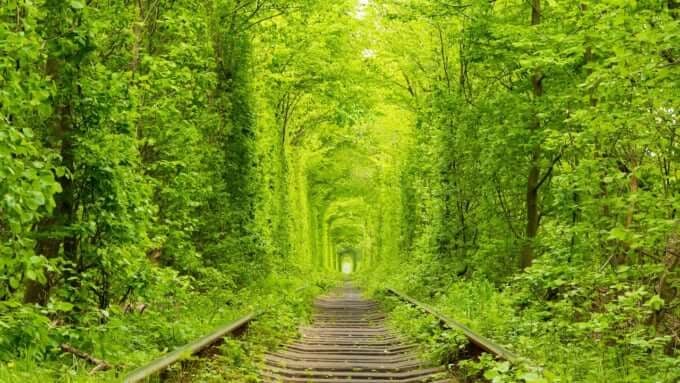
In the small western Ukrainian town connecting Klevan and Orzhiv, there is a railway covered with lush greenery, locally known as the "Tunnel of Love." This beautiful green arch became famous as a filming location for the movie Klevan: Tunnel of Love, attracting couples from around the world as a romantic power spot.
Though it may look like an abandoned railway, a private freight train carrying timber to a local factory still runs through it about three times a day. The passing train naturally prunes the leaves, creating this tunnel-like formation. There is a legend that couples who walk through the tunnel holding hands will be together forever, and if they kiss when a train passes, their wishes will come true.
The scenery changes with the seasons—during autumn, the green foliage turns into vibrant red and gold, offering a different yet equally magical view. It's no exaggeration to call this the most romantic tunnel in the world.
Name: Tunnel of Love
Address: Klevan, Rivnens'ka oblast, Ukraine
3. Ancient City of Tauric Chersonesos and Its Chora

Near Sevastopol on the Crimean Peninsula lies the UNESCO World Heritage Site, the Ancient City of Tauric Chersonesos and its Chora. This heritage site consists of eight parts, including the ancient city ruins and surrounding agricultural lands, and was designated a UNESCO site in 2013.
Tauric Chersonesos was a Greek colonial city founded by the Dorians in the 5th century BC. The ruins of Chersonesos are often referred to as the "Pompeii of Ukraine" (after the famous ruins near Naples, Italy) and were once featured on Ukrainian banknotes.
Various residential buildings have been excavated, spanning from the city's foundation to the Byzantine Empire, including a house that served as a wine production facility. The remaining ancient landscape is considered a rare world heritage site. The preserved agricultural land of Chersonesos is globally unique and has provided important materials for the study of ancient farming techniques.
Name: Ancient City of Tauric Chersonesos and Its Chora
Address: National Preserve of Tauric Chersonesos, Davnya St., 1, Sevastopol, Ukraine
Official/Related Site: http://www.traveltoukraine.org/crimea.htm
4. Swallow’s Nest
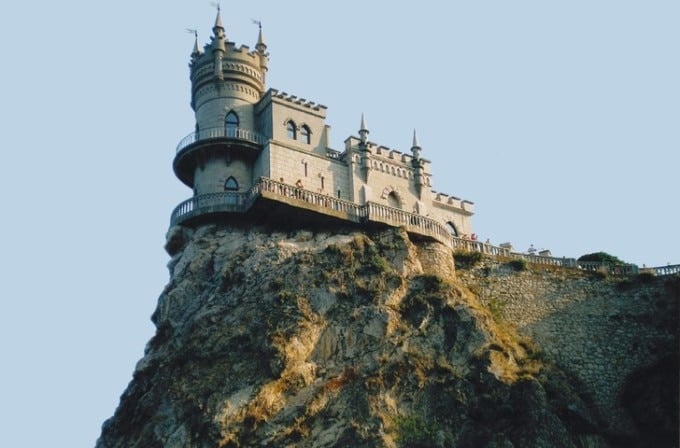
Located on a cliff in Crimea, about 900 km from Kyiv, the Swallow’s Nest is a stunning castle perched on the edge of the Black Sea. Despite its small size (22m in height and 10m in width), it dramatically extends over a 40-meter-high precipice, appearing as if it could fall at any moment—just like a real swallow’s nest.
Originally, the site housed a wooden cottage built in 1895 by a Russian general. Over time, ownership changed multiple times, and in 1911, a German nobleman involved in the oil industry transformed it into the castle seen today. By the early 1900s, it had become a restaurant, but a mid-20th-century earthquake caused severe damage, making it inaccessible for a time.
Today, the Swallow’s Nest operates as a restaurant, where visitors can enjoy a meal with a breathtaking view of the Black Sea.
Name: Swallow’s Nest
Address: Kiev, Ukraine
5. Saint Sophia Cathedral

Located in the heart of Kyiv, Saint Sophia Cathedral was designated a UNESCO World Heritage Site in 1990. It was built around 1017 or 1037 by Grand Prince Yaroslav to commemorate a great victory over the Pechenegs. From the 11th to the mid-13th century, the cathedral served as the seat of the metropolitan bishop, a venue for the enthronement, weddings, and funerals of princes, and a reception hall for foreign envoys. It was also home to the first library and university in Kyivan Rus.
The cathedral is considered one of the largest medieval European architectural structures, measuring 54m in width and 41m in length. Inside, the cathedral is adorned with colorful decorations, mosaics, and frescoes from the 11th century, making it an unmissable tourist attraction in Kyiv.
Name: Saint Sophia Cathedral
Address: Volodymyrska St., 24, Kiev, Ukraine
6. Kyiv Pechersk Lavra (Kyiv Monastery of the Caves)
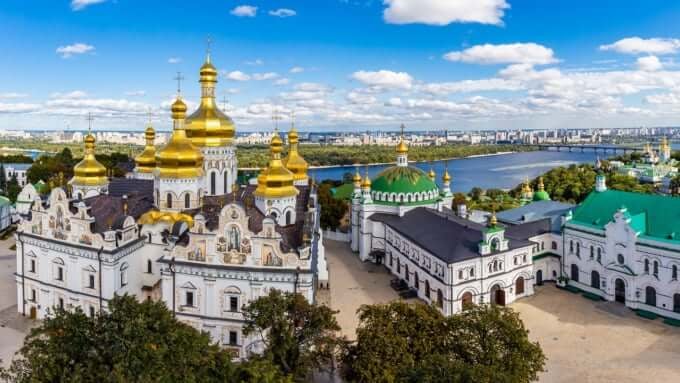
Together with Saint Sophia Cathedral, Kyiv Pechersk Lavra was registered as a UNESCO World Heritage Site in 1990 as part of the "Kyiv: Saint Sophia Cathedral and Related Monastic Buildings and Kyiv Pechersk Lavra." It is one of the oldest monasteries in the East Slavic region, which includes Ukraine and Russia. The site features a cathedral, museums, underground caves, and a major monastery known as the "Great Lavra."
One of its main attractions is the underground caves, where numerous monks are buried. Visitors can even see some of the mummified monks emerging from their coffins. Entering the caves requires purchasing a candle at the entrance, and navigating the narrow maze-like tunnels. Guides provide explanations about the monks' lives.
Additionally, the Great Bell Tower, standing nearly 100 meters high, was once the tallest building in Kyiv. The panoramic view from the top, overlooking golden-domed cathedrals, makes the climb well worth it.
Name: Kyiv Pechersk Lavra
Address: Lavrska St., 15, Kiev, Ukraine
7. Lviv Historic Centre
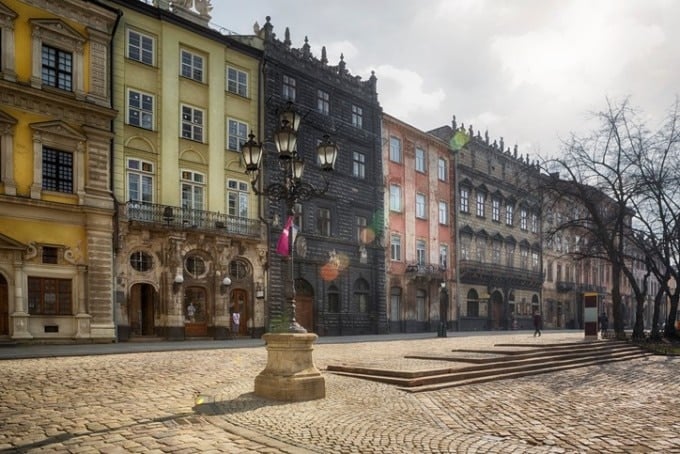
The historic city of Lviv was founded in the 13th century by the Prince of Galicia-Volhynia. From the 14th century onwards, it came under the control of Poland and later Austria, heavily influenced by Western European culture. As a result, Lviv developed stunning architectural beauty, featuring Baroque-style churches and cobblestone streets, earning it the nickname "Pearl of Europe."
Many historically significant buildings have been carefully preserved by the people of Lviv. In 1993, the city was designated as a UNESCO World Heritage Site. Lviv is also home to numerous museums, including the Museum of Religious Art, the oldest pharmacy in the city (established in 1735), and a museum showcasing 16th-century weaponry. These institutions provide great insight into Lviv’s rich history.
Name: Lviv Historic Centre
Address: L’viv the Ensemble of the Historic Centre, Ukraine
Official/Related Site: http://wsimag.com/travel/15099-lviv-a-cultural-capital-of-ukraine
8. Struve Geodetic Arc
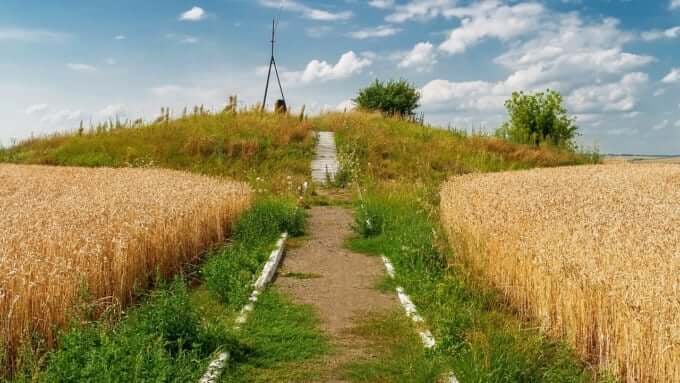
The Struve Geodetic Arc, which stretches over 2,820 km, was established between 1816 and 1855 by German-born Russian astronomer Friedrich von Struve for meridian arc measurement. This system of triangulation points played a crucial role in determining the exact size of the Earth.
A total of 234 survey points were created, with 34 of them being designated as UNESCO World Heritage Sites. The Struve Geodetic Arc is unique because it spans across 10 countries: Ukraine, Norway, Sweden, Finland, Russia, Estonia, Latvia, Lithuania, Belarus, and Moldova, making it a rare and significant heritage site.
Name: Struve Geodetic Arc
Address: Stara Nekrasivka, Ukraine
Official/Related Site: http://whc.unesco.org/en/list/1187
9. Residence of Bukovinian and Dalmatian Metropolitans
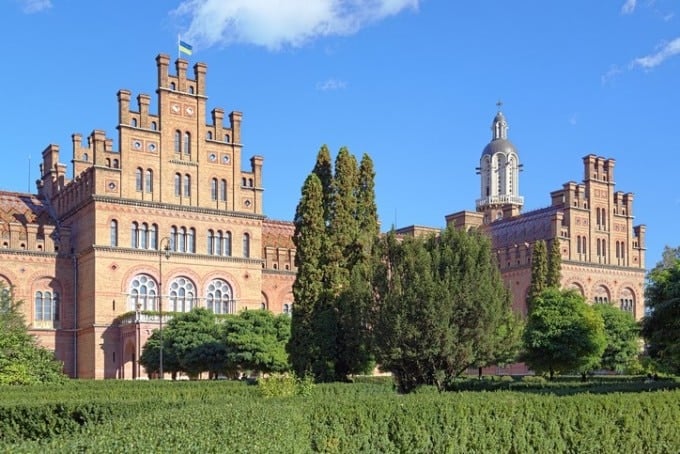
Located in Chernivtsi, this architectural complex was designated a UNESCO World Heritage Site in 2011.
Between 1864 and 1882, while Bukovina was under the Austrian Empire, Czech architect Josef Hlávka designed and built this grand complex to serve as the residence for Bukovinian Metropolitans, along with a cathedral and a monastery. The structure reflects the influence of the Eastern Orthodox Church and is considered a masterpiece of historicist architecture, incorporating various architectural styles from different periods.
Today, the building is part of Chernivtsi University. The complex includes a vast courtyard, a monastery, and a cathedral, making it an impressive and significant historical site.
Name: Residence of Bukovinian and Dalmatian Metropolitans
Address: Chernivtsi Oblast, Ukraine
Official/Related Site: http://whc.unesco.org/en/list/1330
10. St. Volodymyr's Cathedral

Located in Kyiv, St. Volodymyr’s Cathedral is a Ukrainian Orthodox church built in the late 19th century in the Neo-Byzantine style. Unlike many churches that were closed during the Soviet era, this cathedral continued to hold services.
Near Kyiv University, in a business district, its exterior is painted in a charming soft yellow, with golden domes adorning its roof. Inside, the cathedral is decorated with beautiful frescoes painted by Russian artists, including Viktor Vasnetsov and Mikhail Nesterov. The realistic style of these paintings, depicting nature’s beauty, makes this cathedral a must-visit attraction.
Name: St. Volodymyr’s Cathedral
Address: Tarasa Shevchenko Blvd, 20, Kiev, Ukraine
11. St. Andrew’s Church

St. Andrew’s Church belongs to the Ukrainian Autocephalous Orthodox Church and was built in 1747 by Italian architect Bartolomeo Rastrelli.
The church is named after the Apostle Andrew, who is believed to have first introduced Christianity to Ukrainian lands.
Situated along Andriyivskyy Descent in Kyiv, the church is relatively small compared to other grand churches, but its symmetrical structure and elegant design make it one of the most beautiful churches in Ukraine. The exterior is dominated by shades of blue in Baroque style, while the interior features Rococo-style decorations.
The path leading to the church is lined with cafés, restaurants, and souvenir shops, making for an enjoyable walk in the area.
Name: St. Andrew’s Church
Address: Andriivs'kyi descent, 23, Kiev, Ukraine
Official/Related Site: http://www.standrews.org.hk/
12. St. Michael's Golden-Domed Monastery
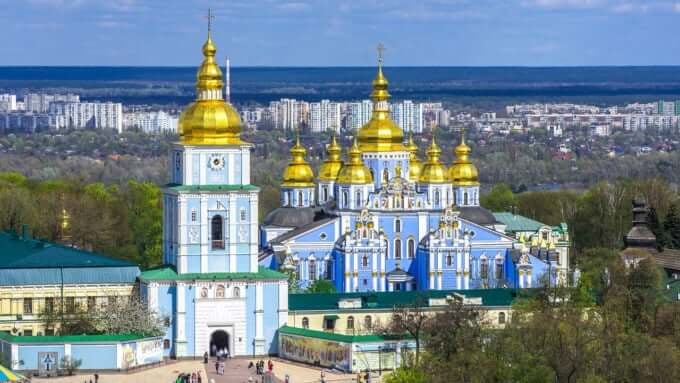
St. Michael's Golden-Domed Monastery is one of Kyiv’s most iconic landmarks. Named after Archangel Michael, the protector of the grand princes, it was the largest monastery in medieval Kyiv.
In 1936, the Soviet Union destroyed the monastery, but after Ukraine gained independence, it was rebuilt. It reopened as a monastery in 2000.
The entrance features a pastel-colored bell tower, and the entire monastery is decorated with vibrant paintings. Its light blue walls and golden domes create a striking exterior, while the interior is peaceful, attracting many worshippers.
Name: St. Michael's Golden-Domed Monastery
Address: Triokhsviatytelska St, 8, Ukraine
Official/Related Site: http://www.archangel.kiev.ua/
13. Primeval Beech Forests of the Carpathians
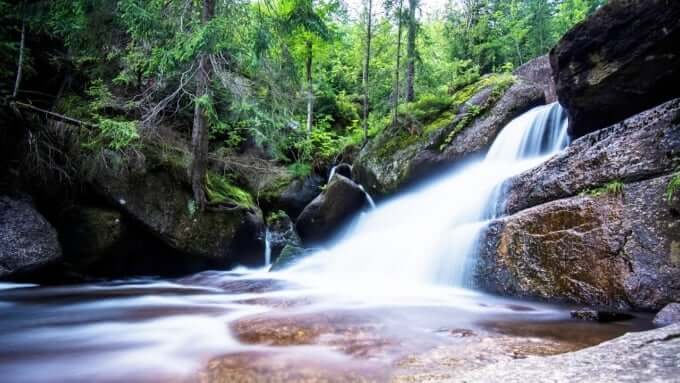
Spanning across Ukraine and Slovakia, this vast beech forest covers an area of 29,278 hectares over 185 km, making it the largest natural beech forest in the world. It was designated a UNESCO Natural Heritage Site in 2007.
This untouched forest is home to over 100 species of plants, including maples, oaks, and lindens. It also shelters 73 species of mammals such as red deer, European mink, brown bears, and red foxes, as well as 101 bird species, including the boreal owl.
In 2011, Germany’s ancient beech forests were added to this heritage listing. The ecosystem of this forest plays a crucial role in studying the evolution of European beech forests.
Name: Primeval Beech Forests of the Carpathians
Address: Carpathian Biosphere Reserve, Ukraine
Official/Related Site: http://whc.unesco.org/en/list/1133
14. St. Michael's Vydubychi Monastery
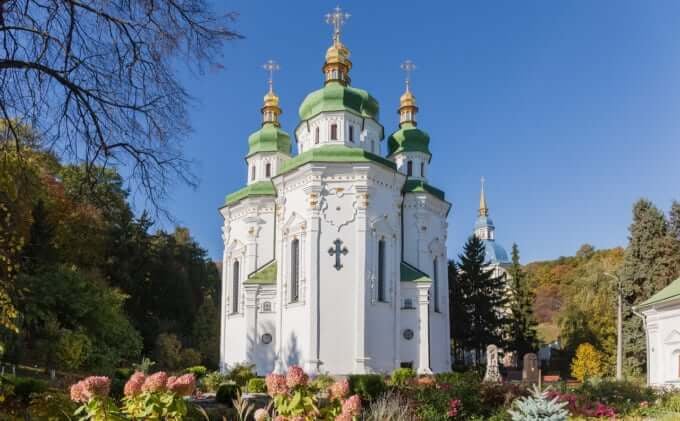
St. Michael’s Vydubychi Monastery was built in the late 11th century as an Orthodox monastery. Established in the 1070s in Kyiv’s Vydubychi area by the son of Grand Prince Yaroslav the Wise, it originally served as a grand prince’s residence with a wooden church.
In the 12th century, it was reconstructed in stone and later became a major center for compiling historical records. The monastery was home to the editing of the "Primary Chronicle" and the "Kyiv Chronicle." Due to its extensive landholdings and princely patronage, it became one of the wealthiest monasteries in Kyivan Rus.
Its white walls, green and blue domes give it a refreshing appearance.
Name: St. Michael's Vydubychi Monastery
Address: Kyiv, Ukraine
15. Mariinskyi Palace
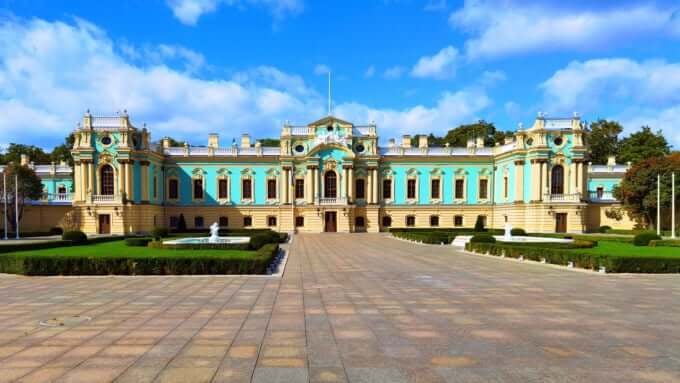
Mariinskyi Palace, located in Kyiv, serves as the official residence of the President of Ukraine. It stands next to the Verkhovna Rada (Ukraine’s parliament building).
Commissioned by Empress Elizabeth of Russia, it was constructed between 1744 and 1752 as the Kyiv Palace, designed by architect Bartolomeo Rastrelli. The palace beautifully combines Ukrainian and Russian Baroque architectural styles.
A fire in 1819 destroyed the second floor, but it was rebuilt in 1870 for the visit of Emperor Alexander II and Empress Maria, after whom the palace was renamed. It is designated as an important cultural heritage site and is open to the public on specific days.
Name: Mariinskyi Palace
Address: Kyiv, Ukraine
16. Taras Shevchenko National University of Kyiv
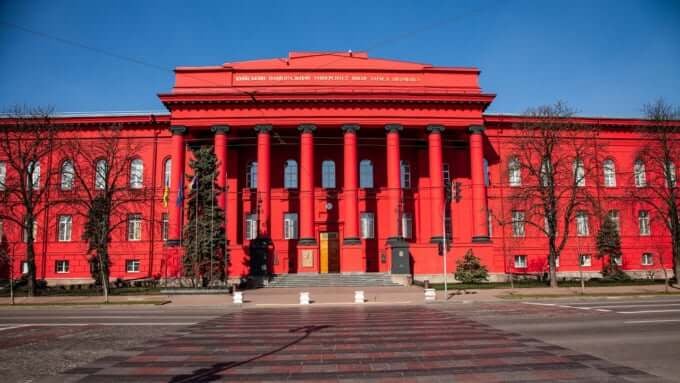
Taras Shevchenko National University of Kyiv is a prestigious national university in Ukraine, located in the capital city. Established in 1834, it is the second-oldest university in Ukraine, tracing its origins to the 17th-century Kyiv-Mohyla Academy.
Initially, the university started with just 62 students and a Faculty of Philosophy. In 1835, it added a Faculty of Law, followed by a Faculty of Medicine in 1847. During the Ukrainian-Soviet War in 1917, many students lost their lives, and the Battle of Kruty in 1918 remains a solemn remembrance event for Ukrainian students.
The university is known for its striking red building. A legend says that during the reign of Tsar Nicholas I, students who protested against conscription were punished by having the university painted red, symbolizing blood.
Name: Taras Shevchenko National University of Kyiv
Address: Kyiv, Ukraine
Official/Related Site: http://www.univ.kiev.ua/en/
17. Golden Gate
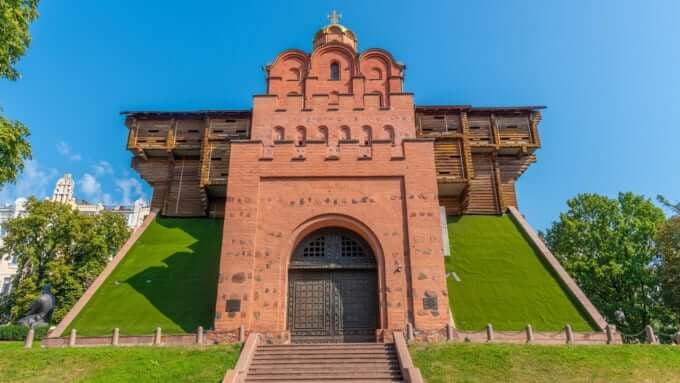
The Golden Gate was built in 1037 during Kyiv’s golden age by Grand Prince Yaroslav the Wise as the main entrance to the city’s fortress. It is believed to have been named after the Golden Gate of Constantinople, the cultural center of the Byzantine Empire at the time. Another theory suggests that the gate got its name because a gilded-roof church, the Church of the Annunciation, was built on top of it.
Before its destruction in 1240, the gate stood 7.5 meters wide and over 9.5 meters tall, decorated with mosaics and frescoes. However, during the 13th century, it was completely destroyed by the Mongol invasion and later buried underground in the 18th century for preservation. The ruins were excavated and studied, and in 1982, a reconstructed version of the gate was built. However, the modern reconstruction is significantly larger than the original structure.
The "Great Gate of Kyiv," featured in Mussorgsky’s famous musical composition Pictures at an Exhibition, refers to this very gate. Be sure to visit this historical landmark when traveling in Ukraine!
Name: Golden Gate
Address: 33 Volodymyr St., Kyiv, Ukraine
18. Dormition Pochayiv Lavra
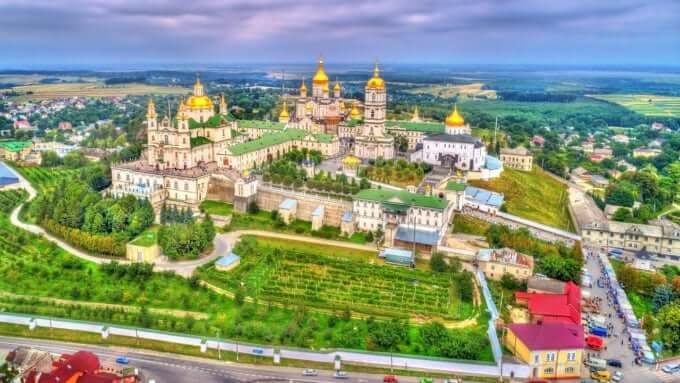
The Dormition Pochayiv Lavra, located in Ternopil Oblast, is a monastery belonging to the Ukrainian Orthodox Church under the Moscow Patriarchate. It is the second-largest monastery in Ukraine after Kyiv Pechersk Lavra. It was founded in 1240 by monks who fled from Kyiv Pechersk Lavra to escape Tatar invasions.
During the Soviet era, religious persecution significantly impacted the monastery.
After World War II, when the region became part of the Ukrainian Soviet Socialist Republic, the number of monks drastically declined from 200 in 1939 to just 12 in 1970. The Soviet government attempted to close the monastery, but strong local opposition allowed it to survive. Since then, efforts to restore and preserve it have continued.
Name: Dormition Pochayiv Lavra
Address: Ternopil, Ukraine
Official/Related Site: http://www.pochaev.org.ua/
◎ Summary
Ukraine, a country neighboring Russia, Poland, Hungary, and other nations, has preserved its unique ethnic culture despite foreign rule. This has resulted in a rich historical heritage, with a capital city over 1,500 years old, medieval townscapes, and vast natural landscapes.
The many churches and historical buildings hold deep cultural significance, and no matter how many you visit, they never cease to amaze. Beyond the places introduced here, Ukraine is full of hidden gems waiting to be discovered. Take the opportunity to visit this beautiful country that has been cherished and preserved by its people!
RELATED ARTICLES
REGIONS
CATEGORIES
FEATURED ON Guide
-
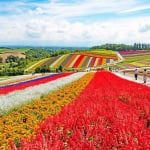
Where will you go for the summer vacation? Introducing recommended spots for domestic travel
-

Kaizu City’s Recommended 7 Tourist Spots. Enjoy the Culture and History Nurtured by Wajū!
-
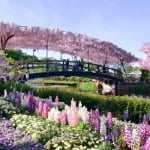
What Makes Ashikaga Flower Park So Special? A Treasure Trove of Photo-Worthy Spots!
-
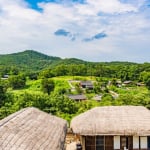
600 Years of Radiant Tradition: Korea’s Historic Villages of Hahoe and Yangdong
-

Two-Colored Seas and a Pink Beach! 4 Must-Visit Spots in North Eleuthera
MOST POPULAR ON Guide
-
 1
1Doha: Must-see Attractions in the Capital of Qatar
-
 2
2Toronto: 10 Things to do in this Picturesque Canadian City
-
 3
3Amarillo: A City Famous for It’s Amazing Canyons, Great History and Music
-
 4
4South Korea: Dazzling Scenery, Rich Culture and Fascinating History
-
 5
5Kuwait: A Country in Middle East Asia Famous for Hot Sand Dunes and Stunning Cityscape

